Elmgreen & Dragset take the plunge at Whitechapel Gallery
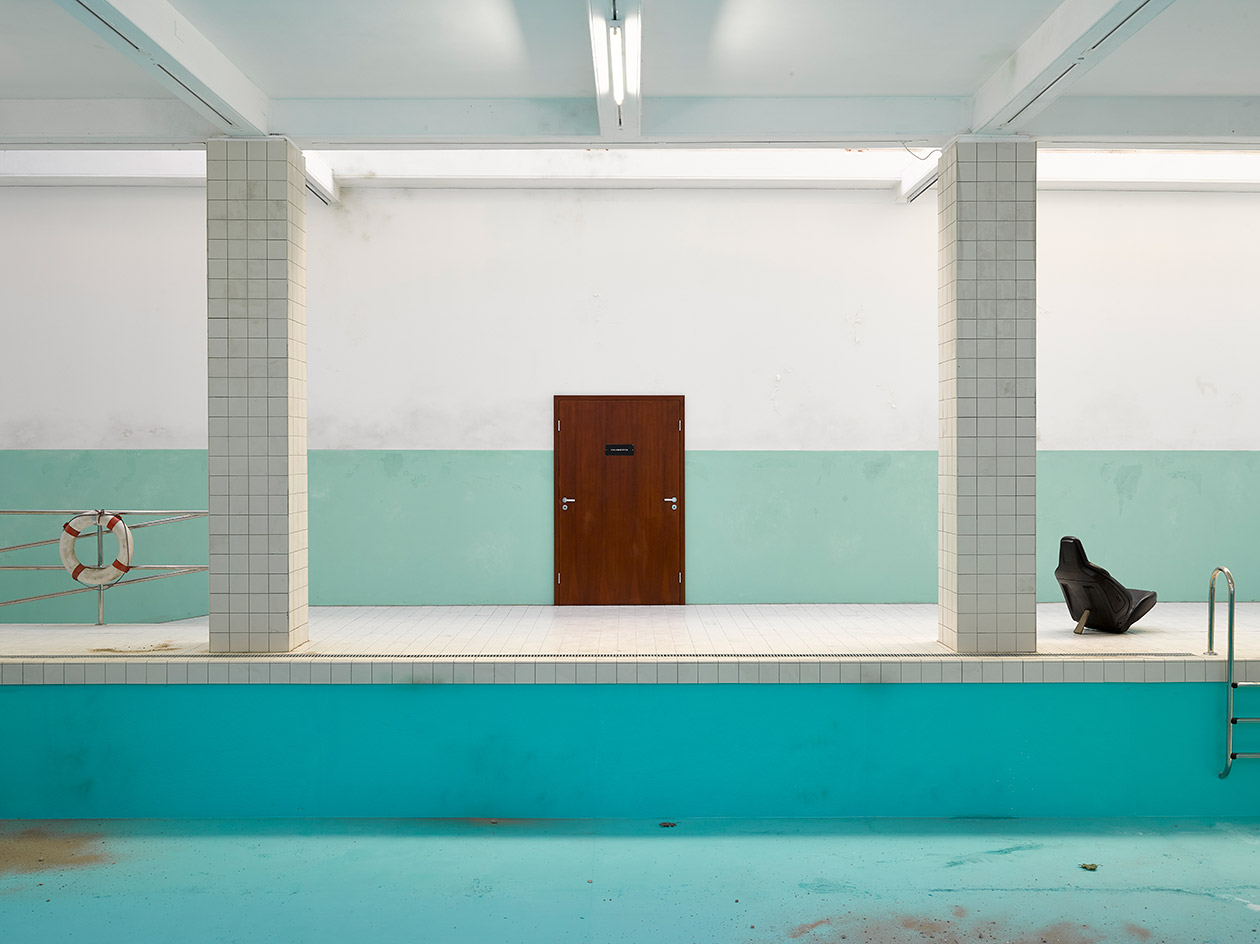
Michael Elmgreen and Ingar Dragset have been disrupting white cube architecture since the 1990s, but their recently unveiled installation at London’s Whitechapel Gallery may be one of their most sagacious transformations yet. The site-specific commission – a ghostly derelict swimming pool in the ground-floor gallery – is a timely monument to the fate of civic spaces in an era of austerity politics.
The art of the con lies in the materiality of the environment: the nostril-tickling perfume of chlorine, a teak changing room door that leads nowhere, the grime-covered municipal tiling, and the peeling mint-green paint that evokes an uncanny sense of nostalgia and queasiness. More fascinating still, is the elaborate narrative that Elmgreen & Dragset have constructed for their audience.
Established in 1901 through social reform, the pool was renovated in the 1950s and used daily by local Aldgate residents until it fell into disrepair during Thatcherism. A plaque by the installation proclaims this is also the site where David Hockney made his first drawings of a swimming pool’s surface (Whitechapel Gallery in fact hosted the first major retrospective of the artist’s work in 1970).
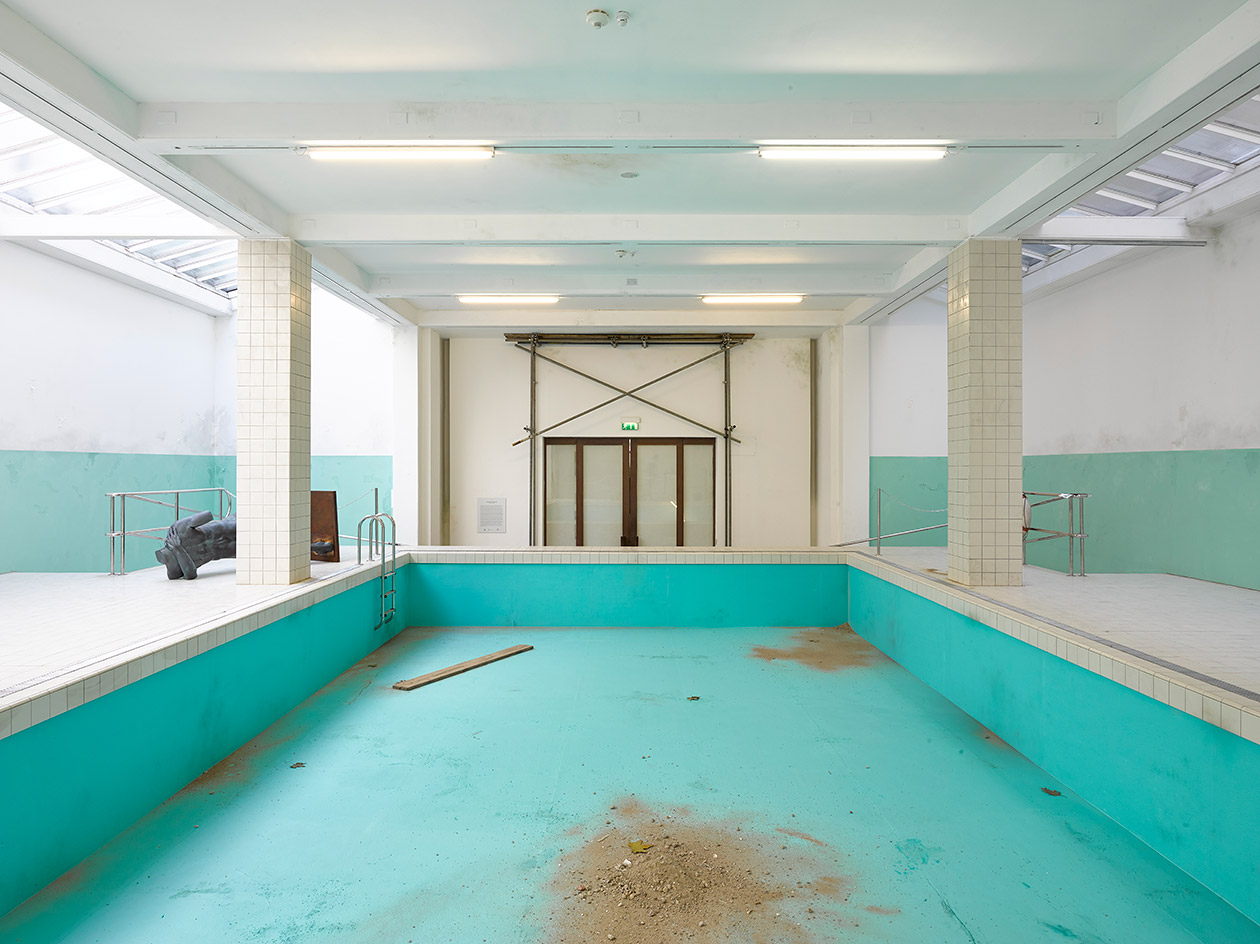
The Whitechapel Pool, 2018, by Elmgreen & Dragset.
Naturally, the pool is destined to become the showpiece of a luxury hotel spa after being bought by a developer in 2016 (notably Boris Johnson’s final year as Mayor of London) – a fabricated outcome that convincingly aligns itself with the ‘intense gentrification’ of East London. Where fact ends and fiction begins has been an ongoing preoccupation of the former Wallpaper* Guest Editors (see W*175), who notoriously once wrapped the V&A in development hoardings and ‘for sale’ signs, shocking unsuspecting visitors to the museum.
The Whitechapel Pool is the focal point of the Scandinavian artist duo’s first survey in the UK – ‘This Is How We Bite Our Tongue’ – which also spans two decades of sculpture. A fallen classical figure of a man, described as an ‘anti-heroic sculpture’ by the artists, is a prelude to the figurative works in the upstairs galleries, exploring notions around masculinity, childhood, capitalism, religion and social class.
They’re sobering themes but Elmgreen & Dragset prove their sense of wit is as honed as ever. Portraits of the Artists (2018) – an empty wall with the faint trace of two portraits that previously hung there – echoes a 1998 sculpture of a couple of pairs of Levi’s jeans and Calvin Klein underpants left crumpled on the floor in a previous gallery. Like with The Whitechapel Pool, we’re left to ruminate on an imagined history of what could have taken place.
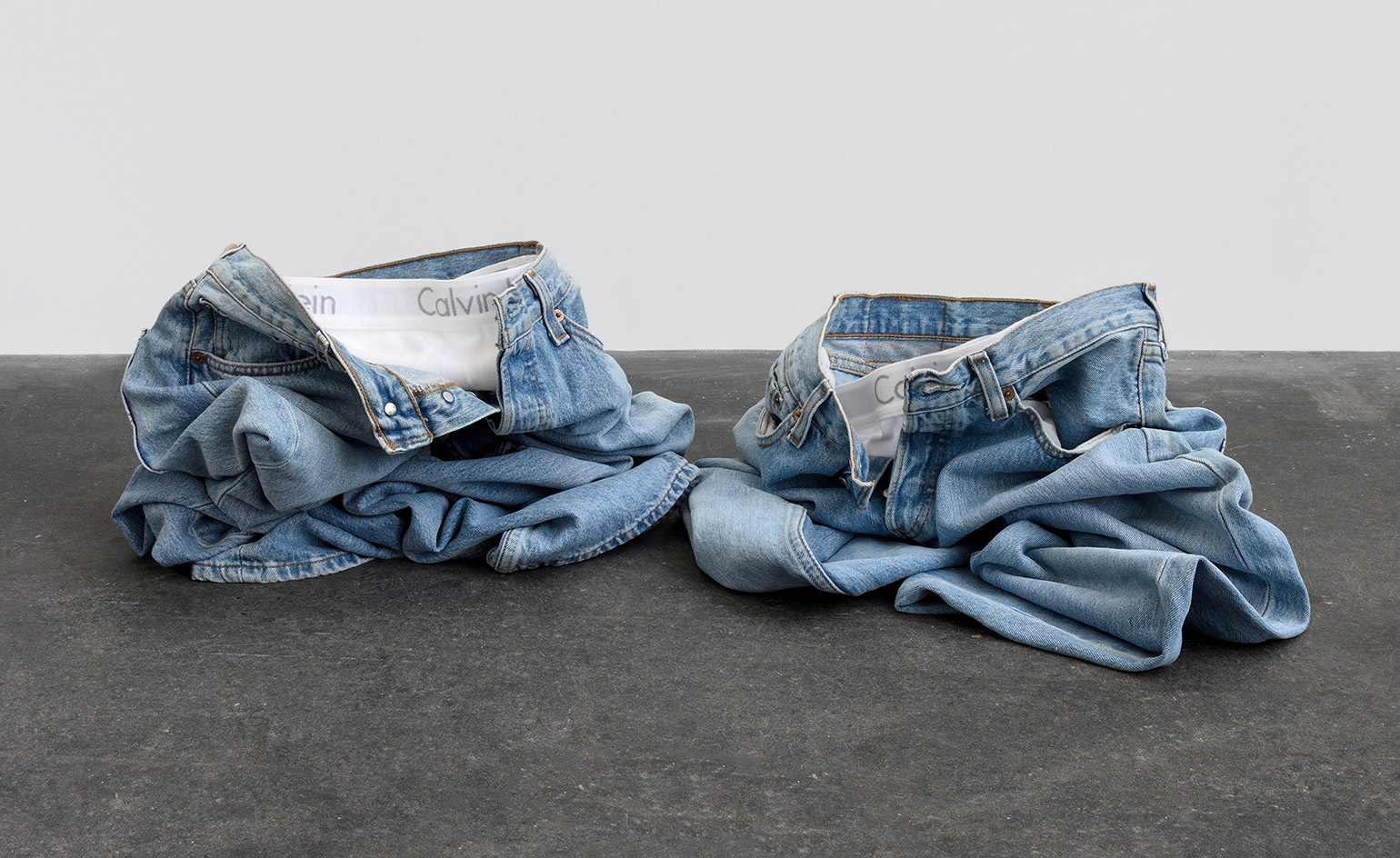
Powerless Structures, Fig. 19, 1998, by Elmgreen & Dragset. Courtesy of the artists
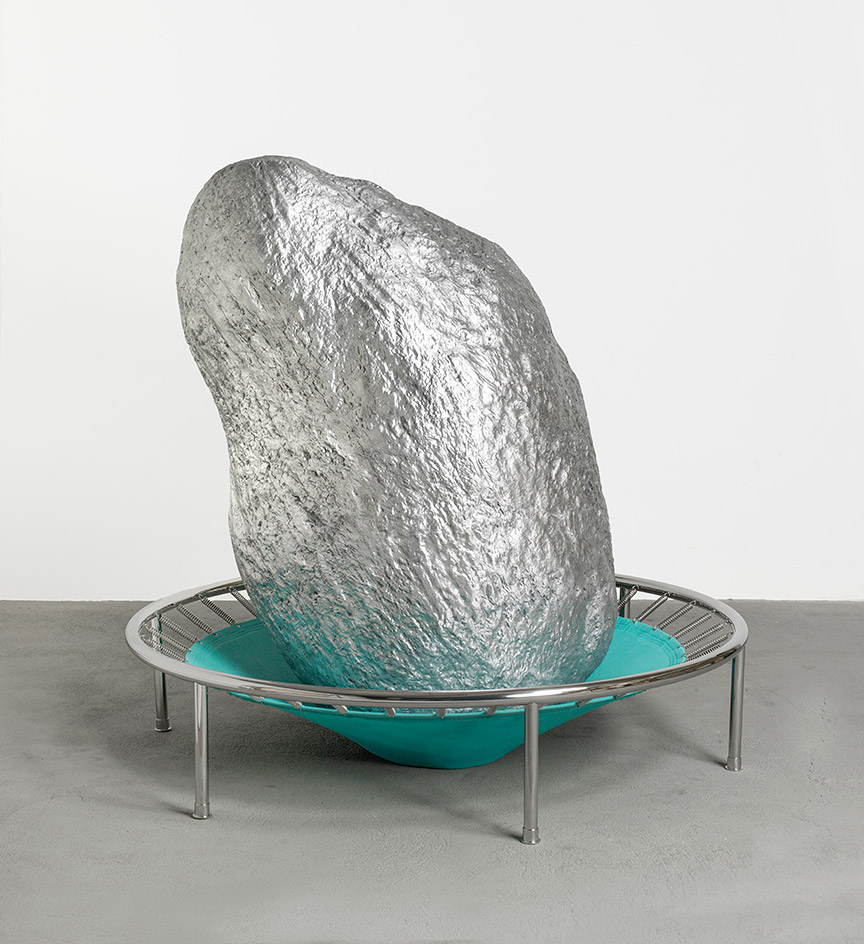
Too Heavy, 2017, by Elmgreen & Dragset. Courtesy of König Gallery
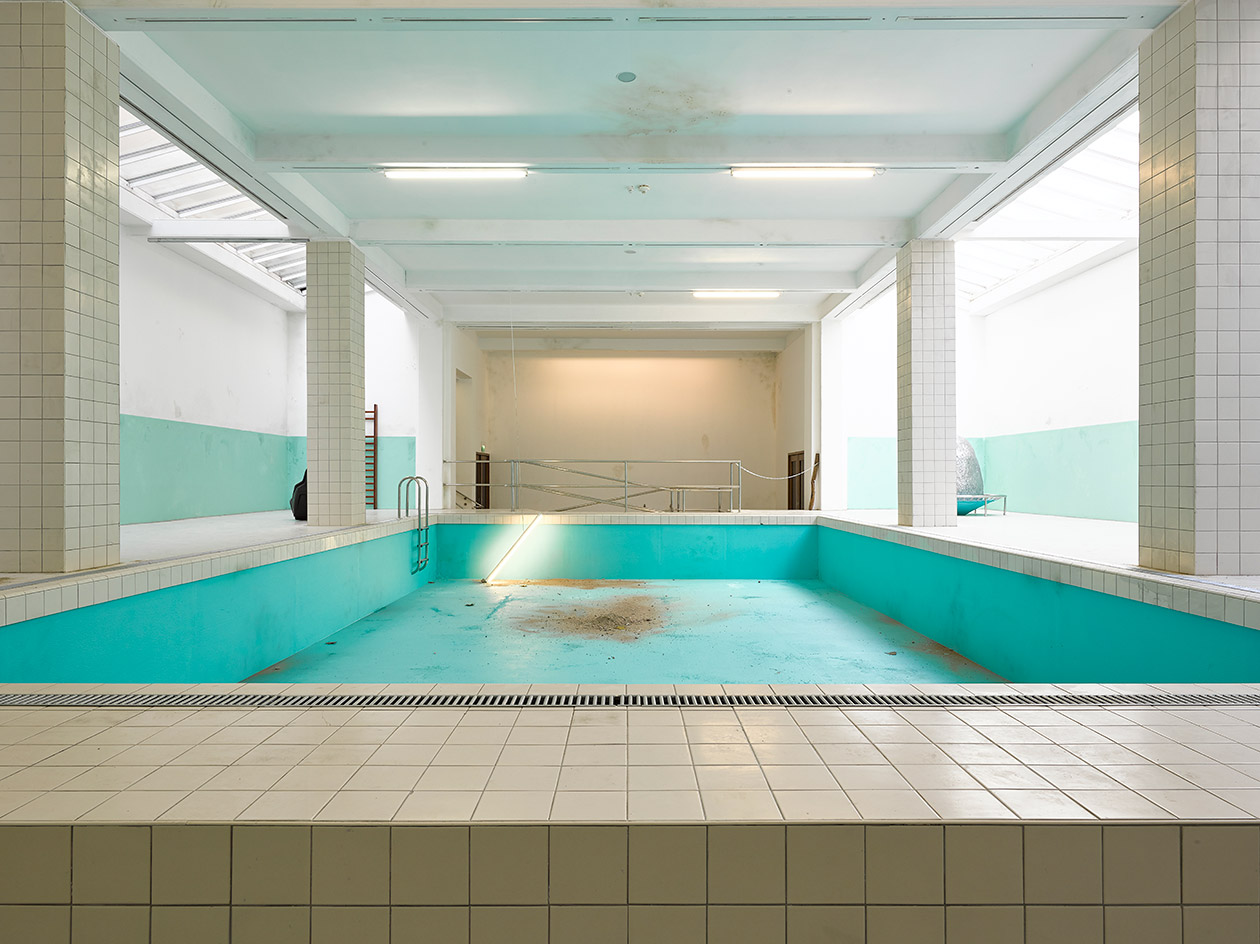
The Whitechapel Pool, 2018, by Elmgreen & Dragset. Courtesy of Whitechapel Gallery
INFORMATION
‘This Is How We Bite Our Tongue’ is on view until 13 January 2019. For more information, visit the Whitechapel Gallery website
ADDRESS
Whitechapel Gallery
77-82 Whitechapel High Street
London E1 7QX
Wallpaper* Newsletter
Receive our daily digest of inspiration, escapism and design stories from around the world direct to your inbox.
-
 Tour the best contemporary tea houses around the world
Tour the best contemporary tea houses around the worldCelebrate the world’s most unique tea houses, from Melbourne to Stockholm, with a new book by Wallpaper’s Léa Teuscher
By Léa Teuscher
-
 ‘Humour is foundational’: artist Ella Kruglyanskaya on painting as a ‘highly questionable’ pursuit
‘Humour is foundational’: artist Ella Kruglyanskaya on painting as a ‘highly questionable’ pursuitElla Kruglyanskaya’s exhibition, ‘Shadows’ at Thomas Dane Gallery, is the first in a series of three this year, with openings in Basel and New York to follow
By Hannah Silver
-
 Australian bathhouse ‘About Time’ bridges softness and brutalism
Australian bathhouse ‘About Time’ bridges softness and brutalism‘About Time’, an Australian bathhouse designed by Goss Studio, balances brutalist architecture and the softness of natural patina in a Japanese-inspired wellness hub
By Ellie Stathaki
-
 ‘Humour is foundational’: artist Ella Kruglyanskaya on painting as a ‘highly questionable’ pursuit
‘Humour is foundational’: artist Ella Kruglyanskaya on painting as a ‘highly questionable’ pursuitElla Kruglyanskaya’s exhibition, ‘Shadows’ at Thomas Dane Gallery, is the first in a series of three this year, with openings in Basel and New York to follow
By Hannah Silver
-
 The art of the textile label: how British mill-made cloth sold itself to Indian buyers
The art of the textile label: how British mill-made cloth sold itself to Indian buyersAn exhibition of Indo-British textile labels at the Museum of Art & Photography (MAP) in Bengaluru is a journey through colonial desire and the design of mass persuasion
By Aastha D
-
 Artist Qualeasha Wood explores the digital glitch to weave stories of the Black female experience
Artist Qualeasha Wood explores the digital glitch to weave stories of the Black female experienceIn ‘Malware’, her new London exhibition at Pippy Houldsworth Gallery, the American artist’s tapestries, tuftings and videos delve into the world of internet malfunction
By Hannah Silver
-
 Ed Atkins confronts death at Tate Britain
Ed Atkins confronts death at Tate BritainIn his new London exhibition, the artist prods at the limits of existence through digital and physical works, including a film starring Toby Jones
By Emily Steer
-
 Tom Wesselmann’s 'Up Close' and the anatomy of desire
Tom Wesselmann’s 'Up Close' and the anatomy of desireIn a new exhibition currently on show at Almine Rech in London, Tom Wesselmann challenges the limits of figurative painting
By Sam Moore
-
 A major Frida Kahlo exhibition is coming to the Tate Modern next year
A major Frida Kahlo exhibition is coming to the Tate Modern next yearTate’s 2026 programme includes 'Frida: The Making of an Icon', which will trace the professional and personal life of countercultural figurehead Frida Kahlo
By Anna Solomon
-
 A portrait of the artist: Sotheby’s puts Grayson Perry in the spotlight
A portrait of the artist: Sotheby’s puts Grayson Perry in the spotlightFor more than a decade, photographer Richard Ansett has made Grayson Perry his muse. Now Sotheby’s is staging a selling exhibition of their work
By Hannah Silver
-
 From counter-culture to Northern Soul, these photos chart an intimate history of working-class Britain
From counter-culture to Northern Soul, these photos chart an intimate history of working-class Britain‘After the End of History: British Working Class Photography 1989 – 2024’ is at Edinburgh gallery Stills
By Tianna Williams